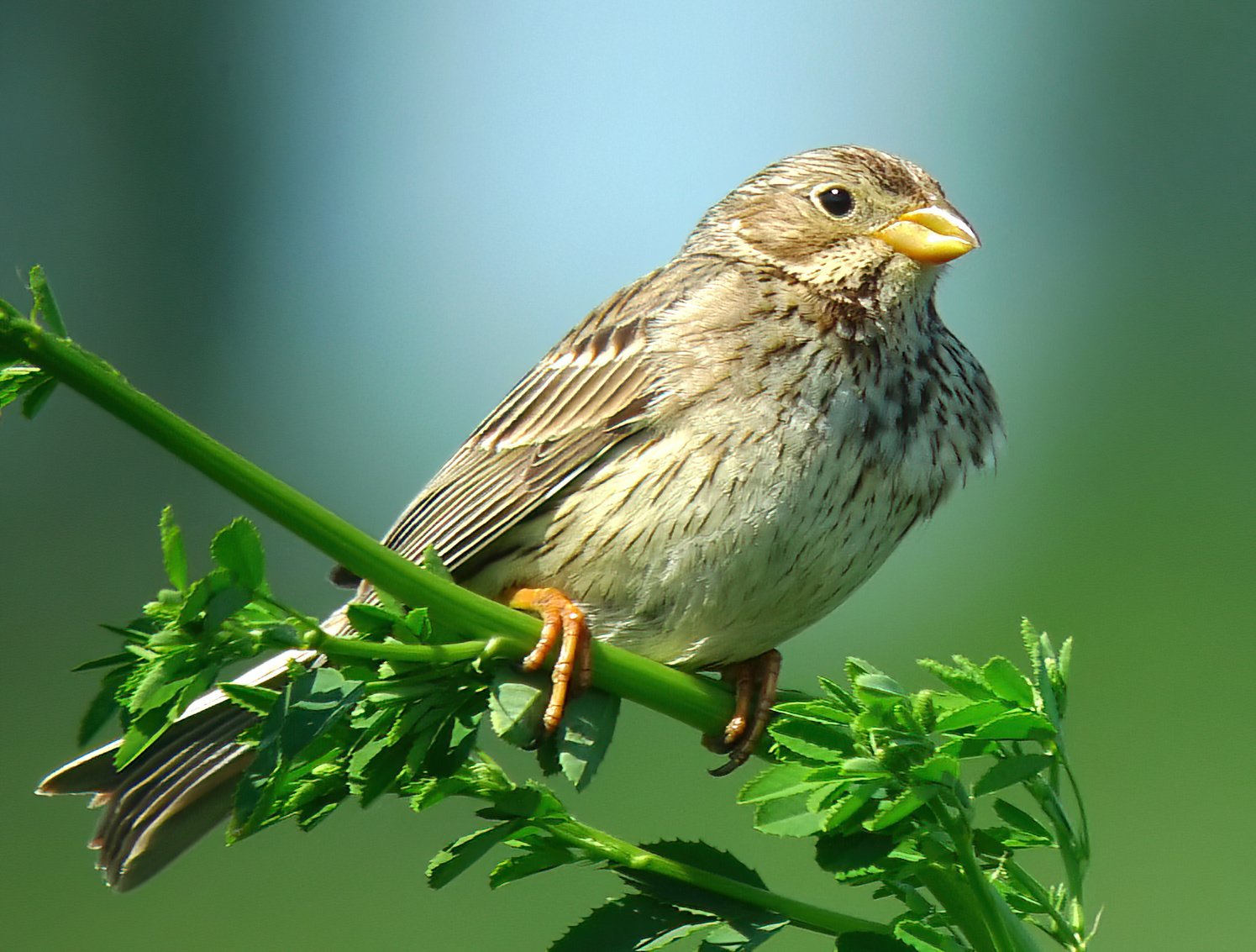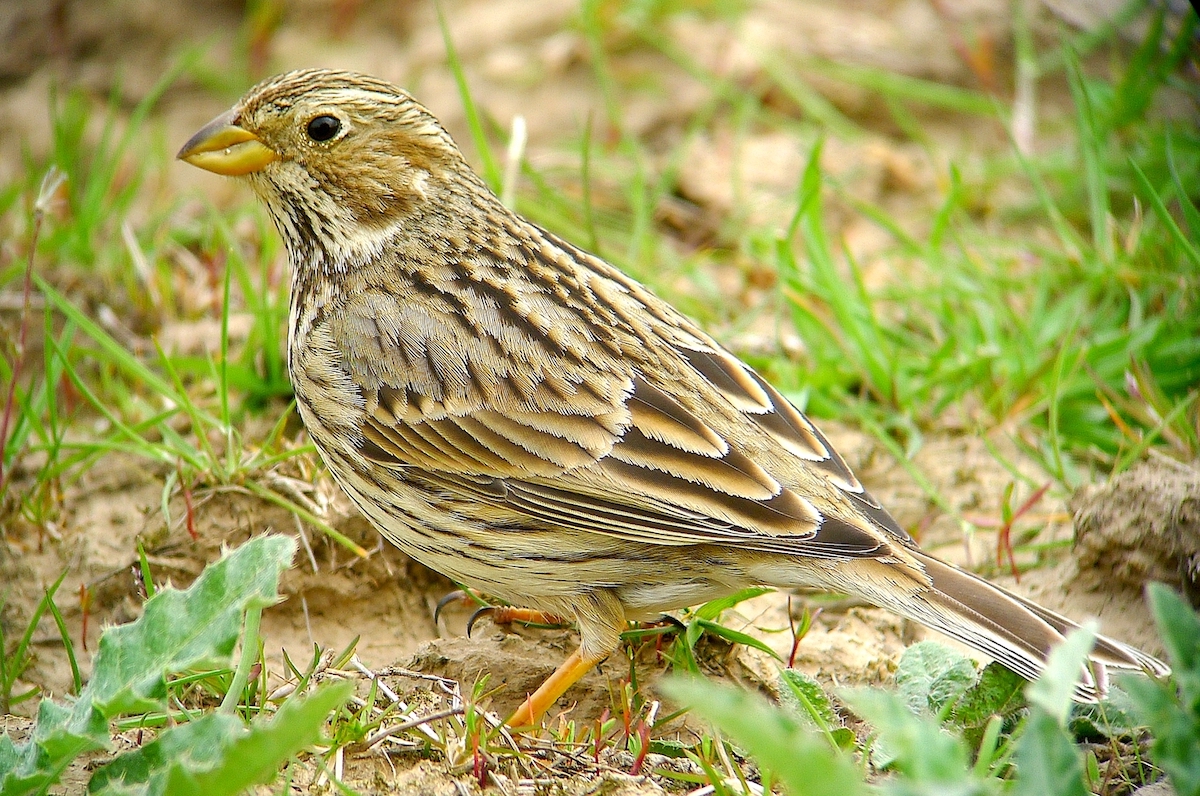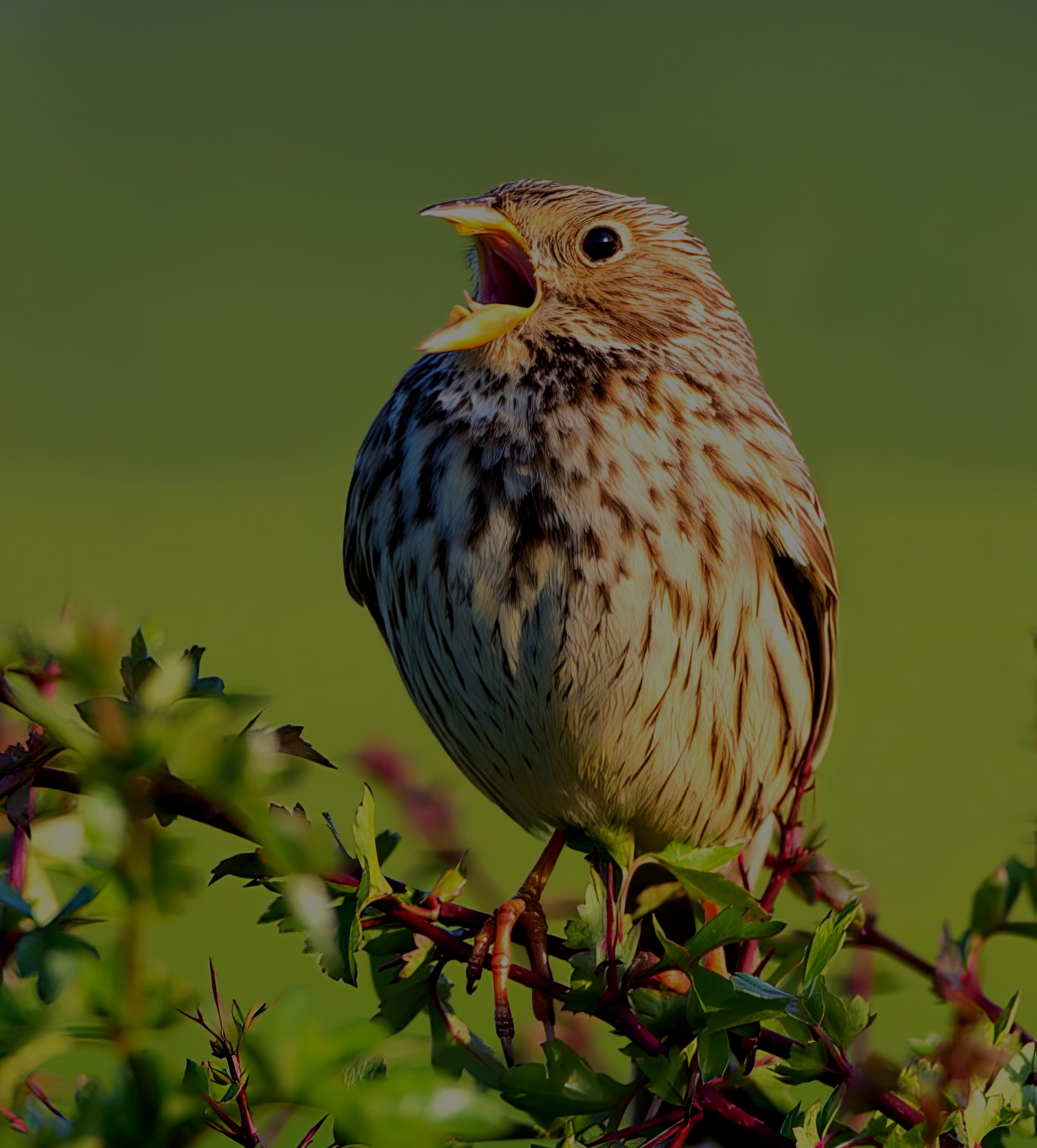Corn Bunting Emberiza calandra
Fairly common but somewhat localised and declining resident.



Corn Bunting is such a sedentary bird that song “dialect” can change within a distance of 25 miles. The Atlas suggested there is evidence they move from west Lincolnshire to the coast to winter. Back in the 1980s the species was still fairly widespread around the county although the population went into free fall from the mid-1970s when agricultural activities intensified. There were thought to be 2,750 pairs in the 1980s but latterly the APEP4 adjusted population in Lincolnshire is estimated at just under 700 pairs. Most are found in virtual islands on the Wolds, in the southern and Witham Fens and along The Wash coast. There is a positive association with spring sown barley which is thought to provide an important food source in the absence of “weeds” eliminated by herbicides. Lack of arthropods to feed chicks because of increased pesticide use, lack of food in winter due to a dearth of stubble (previously an important winter food source) may all be significant. Winter flocks are hard to find, probably because they disappear into the agricultural hinterland of the county where few birders venture. The best known and monitored wintering flock is at Gibraltar Point. LBR reports indicate in the five years to 2018 it declined from 131 birds in December 2014 to 82 birds in January 2019, and 38 March 2020 when elsewhere there was a flock of 65-70 birds along the river Witham January-February. In the Wolds, a count of 58 in the Withcall area included 24 singing males.
(Updated with reference to the new Birds of Lincolnshire (2021) January 2023)
